Morecambe Tramways
History
Morecambe's first tramway, which was standard gauge and horse-drawn, was owned and operated by the Morecambe Tramways Company. The first section (from the Central Pier to the Battery Hotel) opened on the 3rd June 1887, with the remainder (from the Battery Hotel to Strawberry Gardens) — which was wholly within the Borough of Heysham — following on the 19th May 1888.
The tramway was increasingly profitable, and further extensions (northwards) were planned, though only a short one, from the Central Pier to East View was built. In the late 1890s, Morecambe Corporation reached agreement with the company for the corporation itself to extend the tramway northwards (to Bare) — this opened on the 23rd May 1898 — operation being leased to the MTCo for a period of 10 years. This took company operation to its maximum of 3.95 miles of tramway, 0.81 miles of which were owned by Morecambe Corporation.
In late 1905, outside interest — from George Balfour, who was to go on to form Balfour Beatty & Co in 1909, a company which would acquire numerous tramway interests — roused the corporation to action, and on the 27th November 1906, it signed an Article of Agreement with the company to purchase the lines (and assets) within the municipal boundary. Unfortunately for the corporation, local opinion was against municipal operation of the tramway, however, the former simply ignored this and pressed on with the process of acquiring operational powers.
The company-owned track between the Battery Hotel and East View was sold to the corporation on the 26th July 1909, leaving the MTCo to operate the short stretch of line (circa 1.25 miles) between the Battery Hotel (Inn) and Strawberry Gardens. In 1912, in a surprisingly forward-looking step, the company replaced the horse tramways with four petrol-driven trams, the first of these entering service on the 15th January that year; this was the first ever use of this form of traction on a British street tramway.
The tramway continued to run during the Great War — the petrol trams being converted to use gas — and seems to have managed quite well. In 1918, in another forward-looking step, the company purchased three buses, which it used to supplement the trams, and extend its services through to Heysham, thereby staving off the worst excesses of unregulated competition from private bus operators.
The benefits that were likely to accrue from turning the whole operation over to the buses became no doubt ever clearer, and inevitably, the decision was taken to close the tramway, the last tram running on the 24th October 1924 at the end of the summer season.
Uniforms
Despite operating a service for just over 37 years, photos which show staff of the MTCo are surprisingly rare, and what has survived, is virtually all from the last 15 years or so of the system's existence. These photos do however show that drivers and conductors wore informal but smart attire — trousers, overcoats, jackets, waistcoats, shirts and ties. Headgear appears to have largely followed the fashion of the day, presumably the bowler hat in the earlier years, gradually giving way to the flat cap. No badges or licences of any kind were worn, either on the jackets or the hats.
Shortly after the take-over of the majority of the company-owned lines by Morecambe Corporation in 1909, the company introduced petrol trams (1912). This innovative step does not appear to have led to a change in uniform policy, with drivers and conductors continuing to wear informal attire.
Photographs of inspectors and female employees have so far yet to come to light; indeed, it is entirely possible that the company never employed either given the small size of the system and the dependency on seasonal traffic, which would presumably have significantly declined during the Great War years, when systems elsewhere employed women to replace male staff lost to the armed services.
Further reading
For a history of Morecambe's tramways, see: 'The Lancaster and Morecambe Tramways' by S Shuttleworth; Oakwood Press (1976).
Images
Horse tram drivers and conductors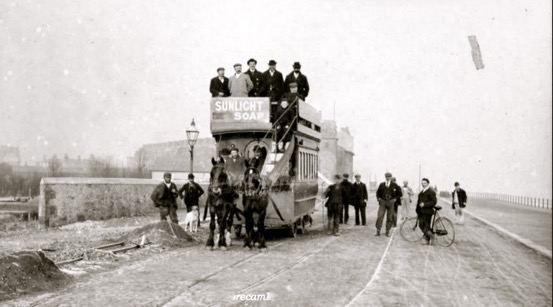
An unidentified horse tram on Morecambe East Parade — photo undated, but judging by the good condition of the tram and the absence of traffic, probably taken in the 1890s or even the late 1880s.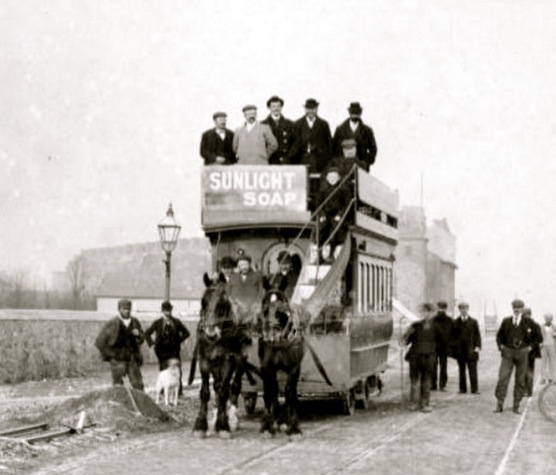
A blow-up of the above photo showing the driver, who would appear to be wearing a flat cap.
Petrol tram drivers and conductors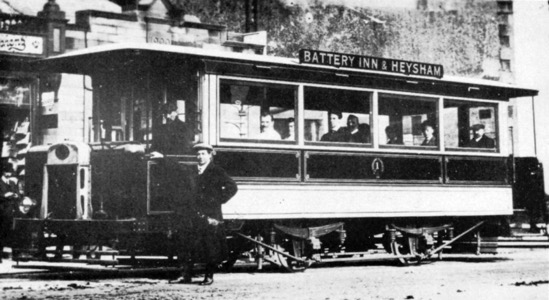
A virtually new Petrol Tram No 1, dating the photograph to 1912 or shortly thereafter. Photo courtesy of the Tramways and Light Railway Society, with thanks to David Voice.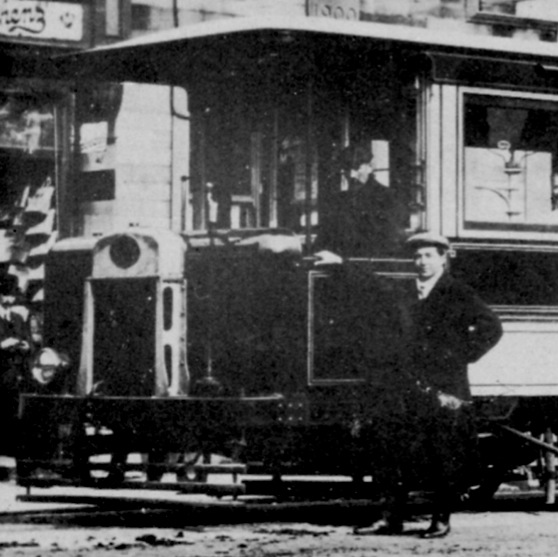
A blow-up of the above photo showing the conductor and driver, neither of whom are wearing a uniform.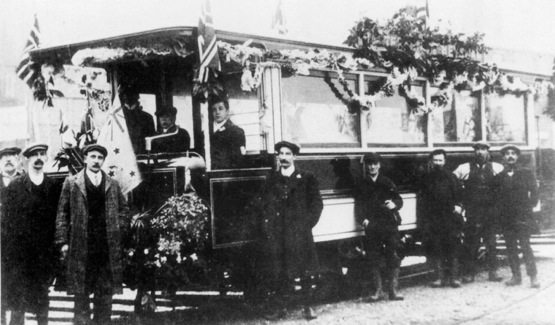
A photo which claims to show "Morecambe's new petrol tram, the first in the UK", which would date the photo to 1912. None of those present are wearing a uniform of any description. Photo courtesy of the Tramways and Light Railway Society, with thanks to David Voice.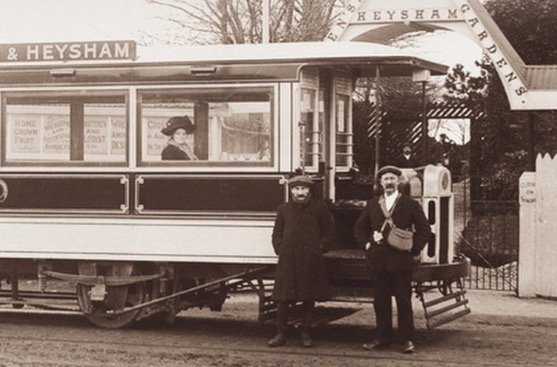
Morecambe Tramways Company petrol tram and crew pose for the cameraman at the southern terminus in Heysham outside Strawberry Gardens — photo undated, but probably taken shortly before the Great War.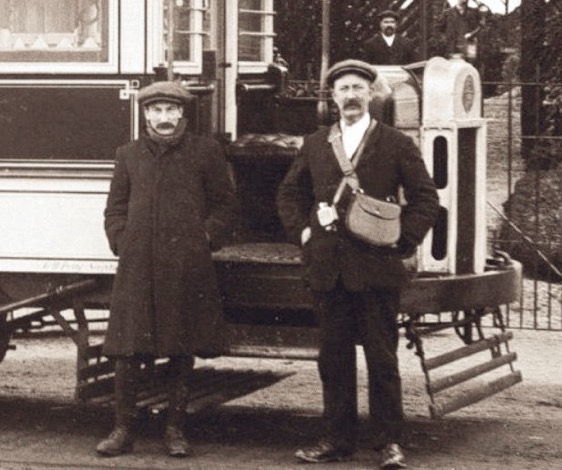
A blow-up of the above photo showing the crew, both in informal attire and flat caps.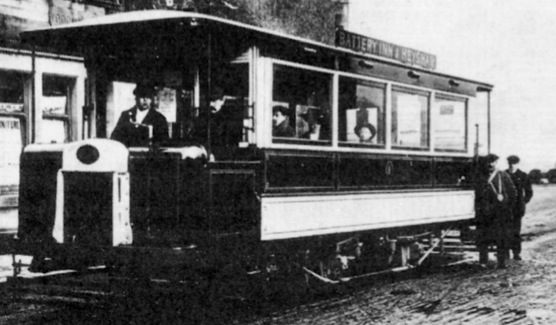
Another photograph of No 1 at Heysham, purportedly taken in 1912. Although the conductor, standing at the rear of the tram, appears to be wearing a licence, this is almost certainly a ticket clipper.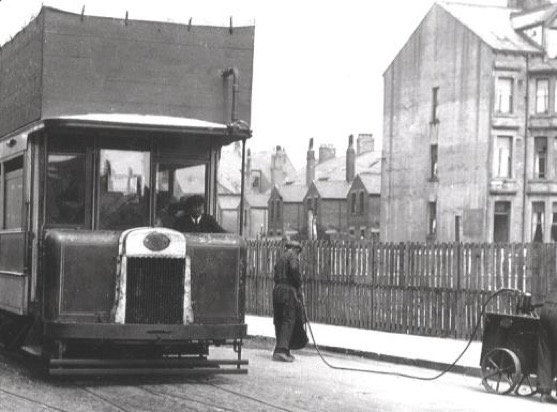
A rare Great War photo of a Morecambe Tramways Company petrol tram, converted to operate on gas. Once again, the driver is in informal attire with a flat cap. Source unknown.